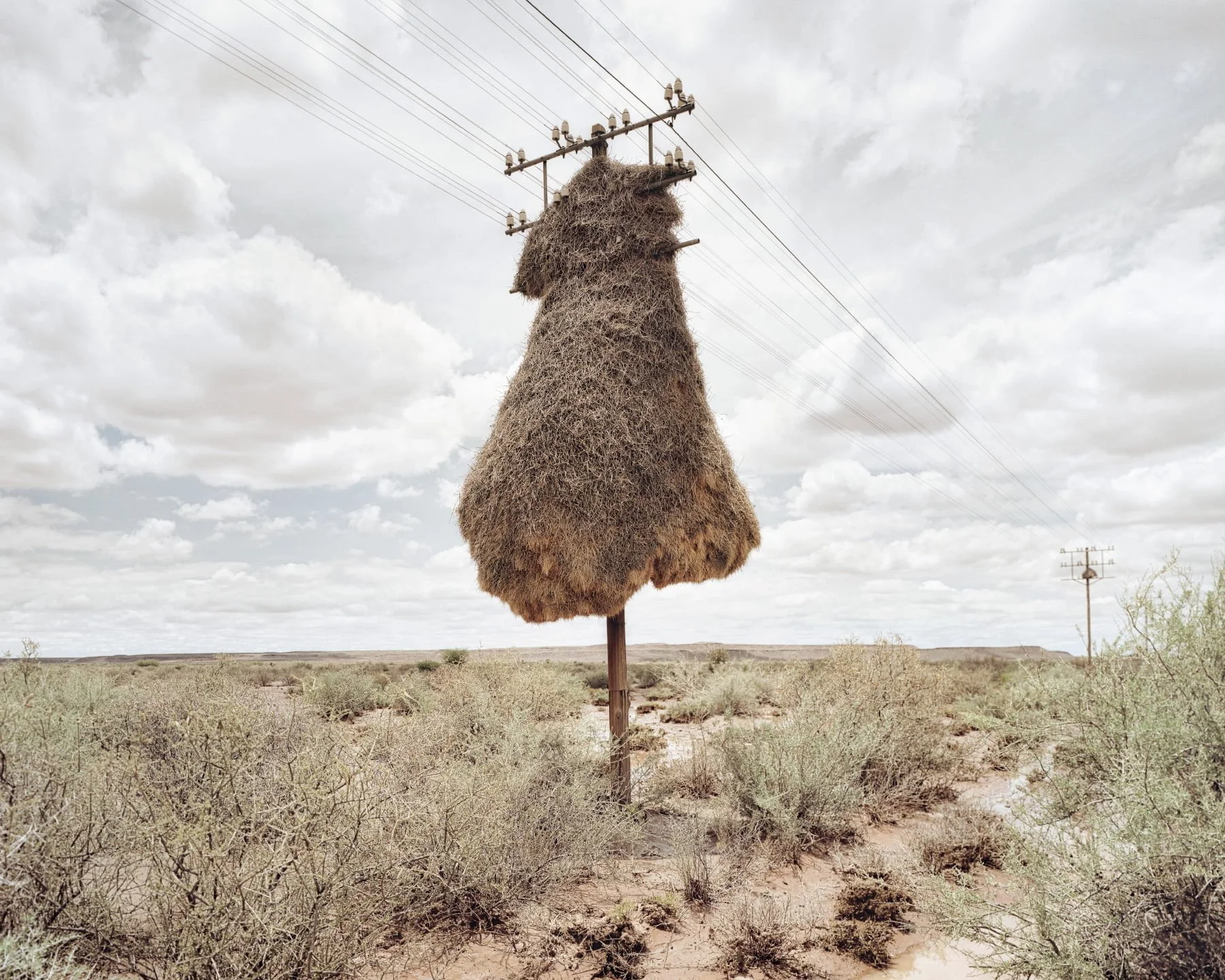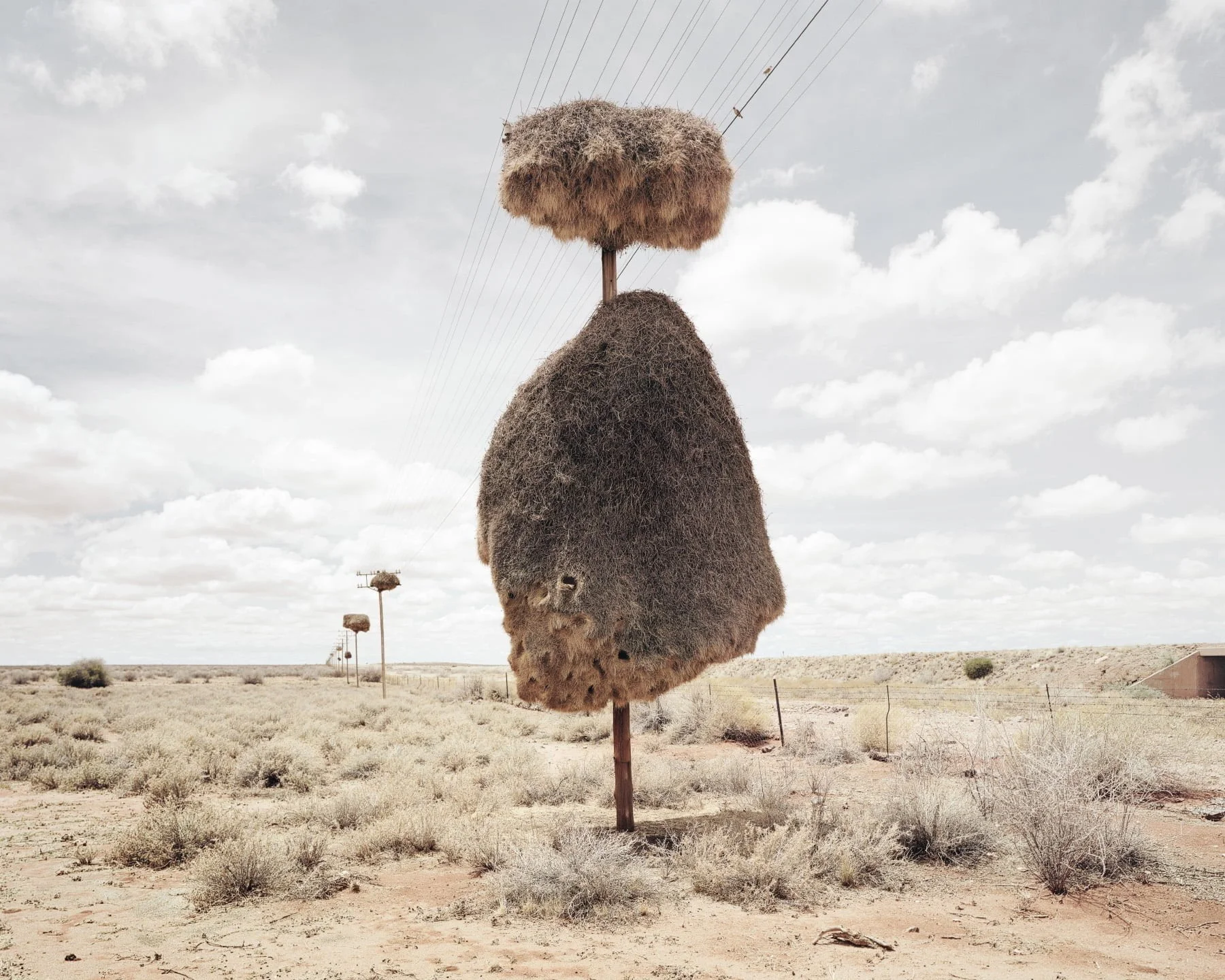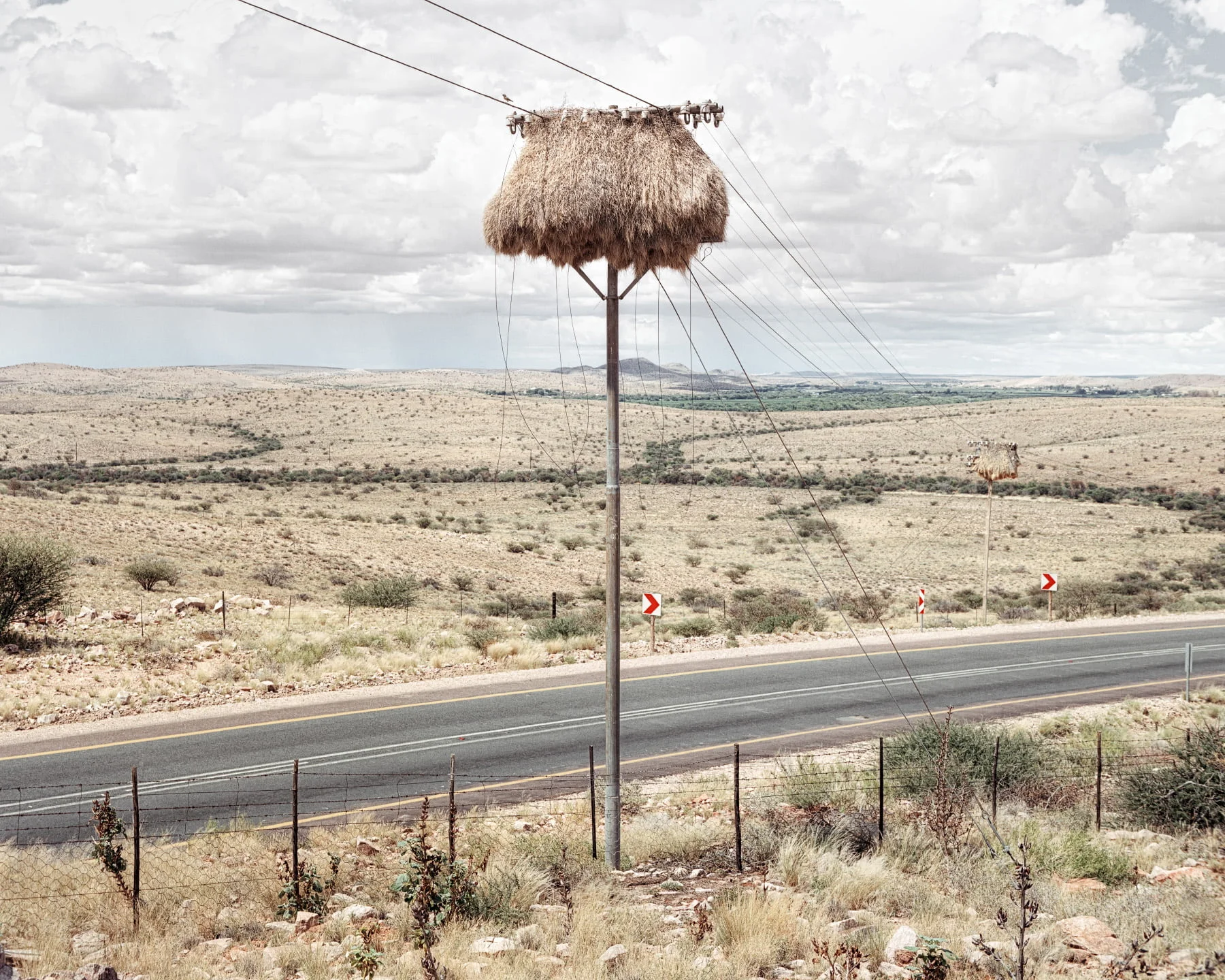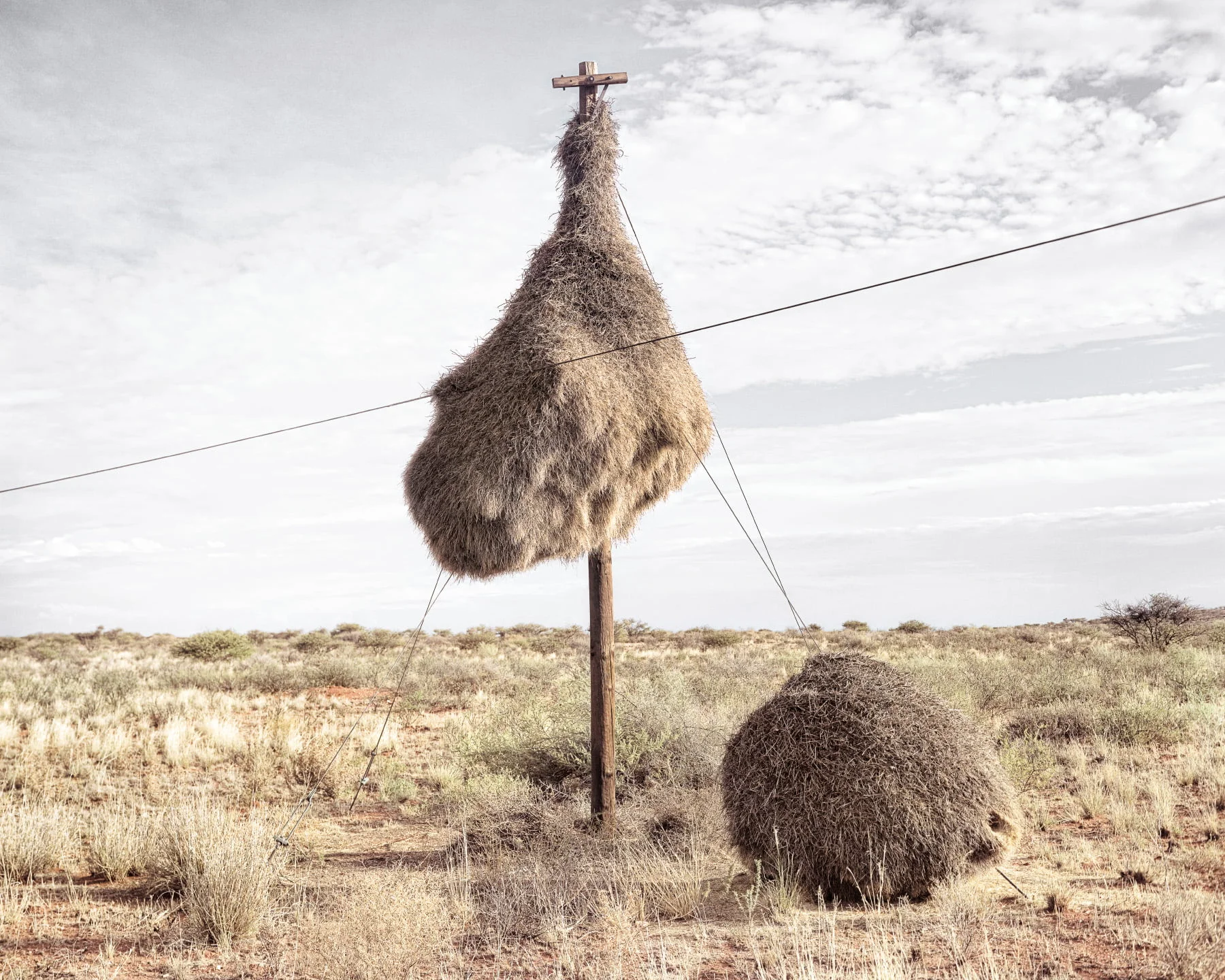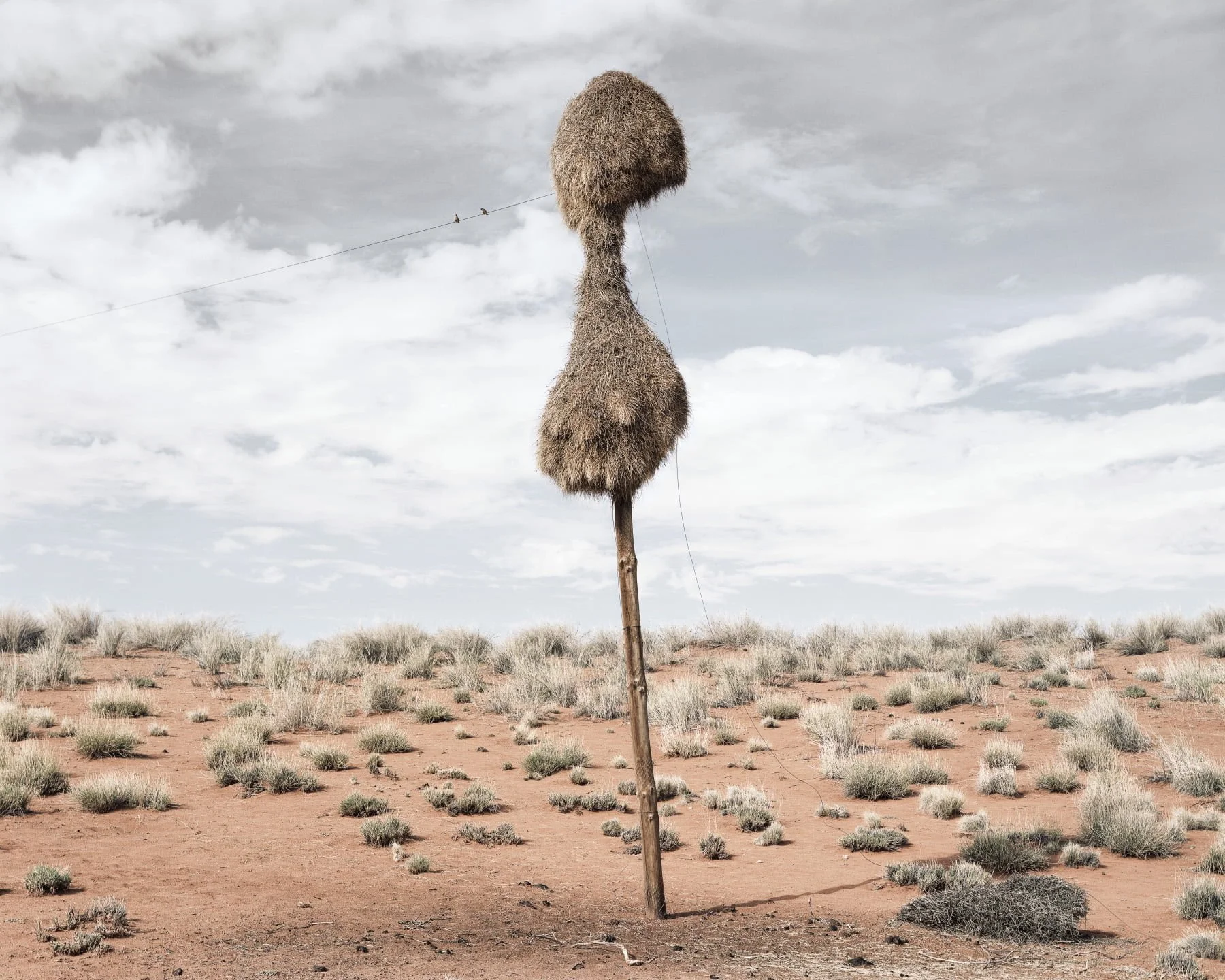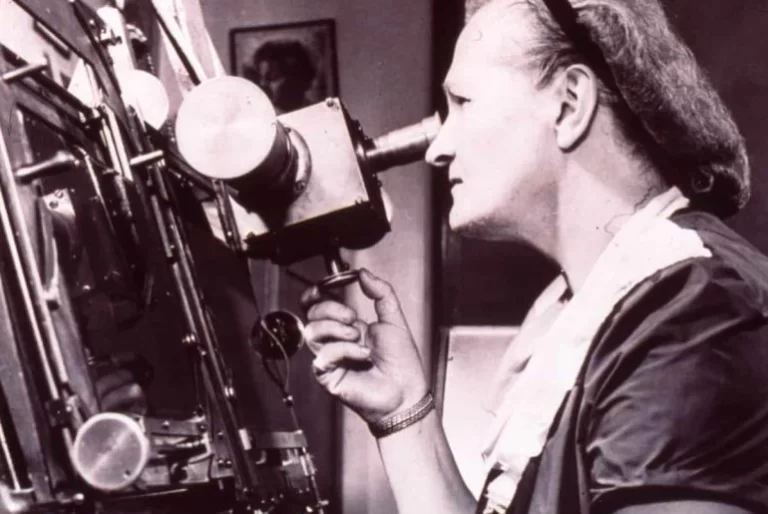Nest to impress: The bird architects of the Kalahari
In the Kalahari desert, trees are few and far between. That doesn’t stop the local weaver birds from building spectacular nests using what’s on hand: electricity poles.
In a remarkable display of nature’s adaptability, the sociable weaver bird builds enormous communal nests on virtually any standing structure.
True to their name, these small brown birds are very social, with each nest housing over a hundred birds. The nests can last for generations, with new hatchlings staying on to help maintain their family home.
South African photographer Dillon Marsh, fascinated by the relationship between humans and the environment, dedicated an entire series to these nests in a project called “Assimilation.”
“We are using natural resources to our benefit, but in return, nature is also capable of using us to its advantage”
“I was amazed by how these nests seem to defy reality. They often look too big to sit comfortably on thin telephone poles. They even resemble creatures themselves, with their thatch looking like fur and their size suggesting hidden muscle and bone,” says Marsh.
“This phenomenon highlights that humans aren’t the only creatures capable of creative adaptation. We use natural resources to our benefit, but nature also finds ways to use us to its advantage. I think this is a humbling realization, and it can help us better appreciate the world around us.”
